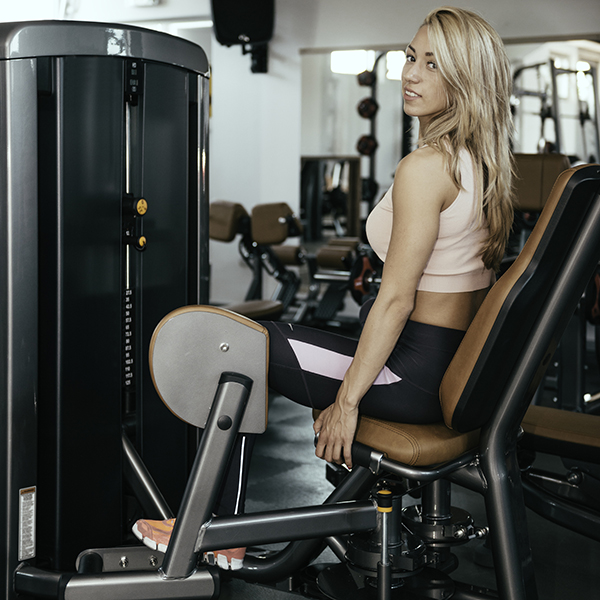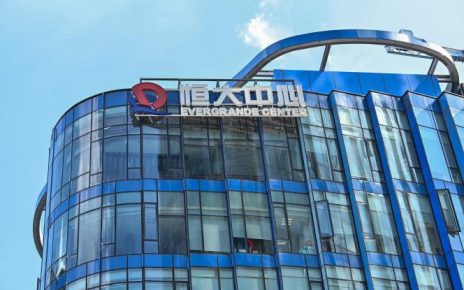The hips are frequently problematic. Not only do extra calories seem to grab onto and land on the hips, but the hip structure also seems to accentuate even the smallest dietary slips. While the hip structure is important for lower-body aesthetics, the muscles around the hip and especially hip abductor muscles are key to obtaining your balance, whether you are jogging, playing tennis, or just going for a walk. Abduction is the action that moves your thighs and legs from midline in the body out to the side of the body. Weak or unbalanced hip abductors limit these activities and make you more prone to injuries or even falls.
You might think that only the very elderly fall, and this is not going to be an issue for you. However, it is very important to maximize your hip abductor strength to prepare for the time that you will become more vulnerable to falls and hip fractures. In the United States, one in every three adults 65 or older falls each year. Falling induces hip fractures and this debilitating condition results in a large percentage of deaths and many serious health problems.
Several research studies have shown that regular exercise helps to reduce hip fractures by 50 percent in women. Imagine what direct hip exercise with proper diet would do! Exercises like leg abductions become absolutely essential and provide a twofold benefit. First, they allow your hips to look great, by firming and shaping them. Second, they strengthen your hip abductor muscles, improving your stability and balance, and this reduces the chances of you becoming a falling statistic somewhere down the road.
Hip Abductor Muscles
The gluteus medius is one of the gluteal muscles of the hip. It is a fan-shaped muscle that lies just deep to the large gluteus maximus (which makes up most of the shape of the buttocks). The gluteus medius is attached between the ilium bone of the hip and the posterior part of the femur. It strongly abducts the femur at the hip joint (moves the femur laterally, away from the midline of the body). It also functions to laterally rotate the hip during abduction (by the lateral part of the thigh), toward the middle of the body.
The gluteus medius has probably the most important role for maintaining balance during walking or running. This is a critical muscle for elderly persons who are more prone to falling accidents. It is also important for sports requiring quick changes in body position, without loss of balance (e.g., skiing, skating, dancing, etc.).
As its name would infer, the gluteus minimus is the smallest of the gluteal muscles and it is also the deepest. It attaches to the outer surface of the ilium bone of the pelvis, deep to the gluteus medius, and to the posterior and middle surfaces of the femur bone of the thigh. Similar to the gluteus medius, it abducts the femur on the pelvis. Because it is smaller than the gluteus medius, it is not quite as strong of an adductor as its bigger cousin.
The tensor fascia lata muscle is enclosed between two layers of the fascia lata. It attaches to the top part of the iliotibial tract of the fascia lata. The proximal (upper) attachment of the fascia lata muscle is the anterior (front) part and lateral parts of the hip bones. It attaches distally (toward the feet) along the iliotibial tract. The tensor fascia lata muscle lies somewhat anterior to the hip joint, so it does not act as a strong abductor. Nevertheless, it is very active and forcefully contracts during abduction movements of the gluteus medius and minimus muscles. In addition, the tensor fascia lata muscle pulls on the iliotibial tract, thereby steadying the hip and upper body on the thigh. Furthermore, it also prevents posterior displacement of the iliotibial tract during strong hip extension by the gluteus maximus muscle.
Seated Hip Abductions
The seated hip abductor machine in your gym will be perfect for targeting the outside of the thigh and the abductor muscles of the hip. You should aim for a minimum of 15-20 reps on each set.
1. Sit in the hip abduction machine with your back flat against the backrest and your feet/heels on the foot bars (some units have foot bars and others foot rests).
2. Your thighs should begin close together. The thigh pad should rest on the lateral side (outside) of either thigh, just above the knee. You may need to pull in on the position lever to place the legs and thighs close together before you start the exercise.
3. Grasp the side handles with both hands to stabilize your torso.
4. Push the legs away from one another by abducting the thigh at the hip joint. Make this a smooth and not a fast, ballistic push. Take about two full seconds to go from the position with the thighs close together to wide apart.
5. Hold the fully abducted position for a count of two seconds.
6. Slowly control the descent of the resistance and return the legs to the starting position. Take a full three seconds to do this.
7. Do not rest, but begin the next repetition, and rest only after the set is done.
Tightening and firming the muscles that comprise the hip structures will take time and some dedication to both diet and exercise. Great-looking hips are not easy to achieve, but it is not an impossible task either. Although genetics will establish much of your shape, you can help your genetics by getting everything out of them that you can, so don’t give up.
While your hips might not be everything that you want them to be today, they will be firmer and more shapely in only a few months. As a secondary benefit, by investing time into leg abductions, you are also protecting yourself against falling and hip fractures and even knee injuries later in life.
Sometimes insurance is worth taking out, and this is one of those insurance exercises that will pay off later – but one that you can enjoy now, by developing a great set of firm and shapely hips!
References:
Colon-Emeric C, Kuchibhatla M, Pieper C, Hawkes W, Fredman L, Magaziner J, Zimmerman S and Lyles KW. The contribution of hip fracture to risk of subsequent fractures: data from two longitudinal studies. Osteoporos Int, 14: 879-883, 2003.
Feskanich D, Willett W and Colditz G. Walking and leisure-time activity and risk of hip fracture in postmenopausal women. JAMA, 288: 2300-2306, 2002.
Geiser, C.F.; O’Connor, K.M.; Earl, J.E. The Effects of Isolated Hip Abductor Fatigue on Frontal Plane Knee Mechanics. Med Sci Sports Exerc, 42: 2010. doi: 10.1249/MSS.0b013e3181b7b227.
Mercer, V.S.; Chang, S.H.; Williams, C.D.; Noble, K.; Vance, A.W. Effects of an exercise program to increase hip abductor muscle strength and improve lateral stability following stroke: a single subject design. J Geriatr Phys Ther, 32:6-15; 2009.
Nakagawa, T.H.; Muniz, T.B.; Baldon, R.M.; Dias, M.C.; Menezes Reiff, R.B.; Serrao, F.V. The effect of additional strengthening of hip abductor and lateral rotator muscles in patellofemoral pain syndrome: a randomized controlled pilot study. Clin Rehabil, 22:1051-1060; 2008.
Niemuth PE, Johnson RJ, Myers MJ and Thieman TJ. Hip muscle weakness and overuse injuries in recreational runners. Clin J Sport Med, 15: 14-21, 2005.
Rutherford, D.J.; Hubley-Kozey, C. Explaining the hip adduction moment variability during gait: Implications for hip abductor strengthening. Clin Biomech, 24:267-273; 2009.
The post The Secret to Firm and Shapely Hips first appeared on FitnessRX for Women.





